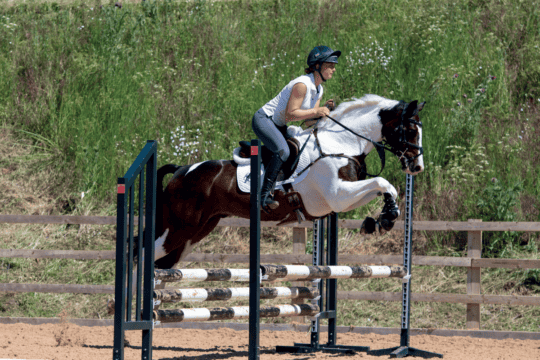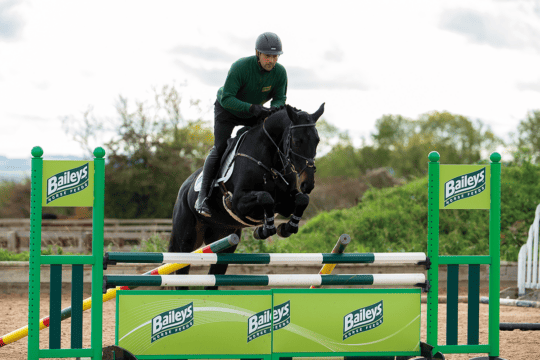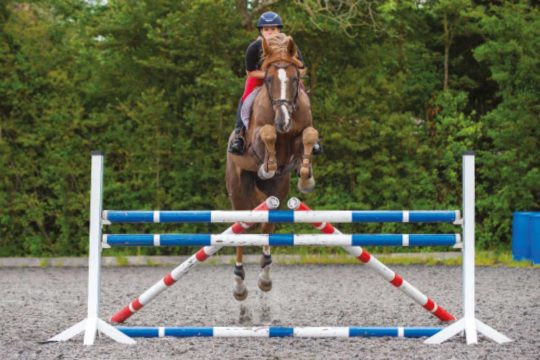-
Riding Schooling and Training
-
Health and Veterinary
-
Management
-
Mind Matters
-
Buying and Selling
-
Insurance Advice
FAQs
Developing a secure, stable jumping position will help you be more effective over fences. Here’s four common position problems and how to put them right
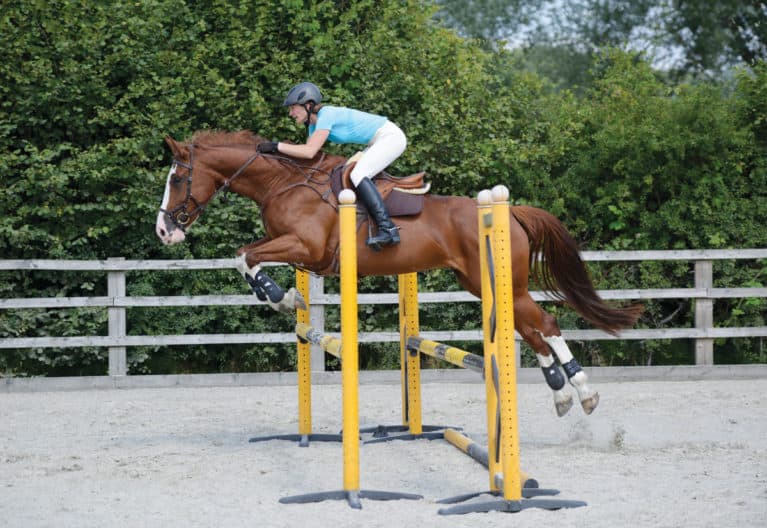
There’s a lot to think about when you’re tackling a course of fences – you’ve got to remember where you’re going, create and maintain the right canter, see a stride, tackle spooky obstacles and stay out of your horse’s way in the air so he can leave the poles in their cups. It’s no wonder most of us allow positional flaws to creep in, which take root and establish themselves as bad habits before we know it.
The problem with poor positional habits is no matter how small they are, they have a knock-on effect on the rest of your body as it tries to compensate. This can hinder your horse’s effort or make you less effective in the saddle and if, like many riders, you suffer from a bad back or achy knees, it can even cause low-grade concussive pain in those areas. However, position problems are easy to fix by creating muscle memory.
Position perfect
When you’re in the correct position for jumping…
- your hands will move independently and won’t interfere with your horse’s mouth
- you’ll be in balance with him through the take-off, jumping and landing phases
- the angle in your upper body will close slightly but the angle of your knee won’t change
- your weight will be anchored in your heel
Muscle memory
Muscle memory is established through repetition and allows you to enact a series of physical responses to a situation without having to think about each one as you do them.
Think back to learning to rise to the trot or drive a car – when you first began, you had to think about every movement you made with your legs and hands, and they probably felt awkward and poorly timed. But now, with plenty of practice behind you, you rise to the trot or drive without really thinking about it. That’s because correct repetition has established a go-to physical response to the situation you’ve found yourself in.
This phenomenon isn’t restricted to everyday activities, either, and by repeating the correct response, even the most complex tasks will feel like second nature. The downside? It’s just as easy to train your muscle memory to do the wrong thing, so focus on quality rather than mindlessly repeating the task.
Another pair of eyes
The best and most efficient way to identify and fix position issues is to ask someone to remind you to adopt the correct position every time you slip out of it. In the early days, these reminders will come thick and fast, as your body finds it more natural to adopt the position it’s used to, but with sufficient practice, you’ll need fewer reminders.
If you can’t ride with an instructor every time you jump, team up with a friend at the yard and school over fences together, giving each other helpful reminders, or exchange fence-setting and position-spotting services.
Video can be a helpful tool, too – either ask a friend to film you on a phone or invest in a camcorder and tripod that you can set up at the side of your arena. If you’re happy to spend a bit more, there are a number of clever video systems designed for just this purpose – you wear trackers as you ride and the camera swivels on its base to keep you in its view.
Reviewing video footage once a week can help you see incremental progress and keep note of where you still need work.
Practice makes perfect
Of course, the best way to improve your jumping position is by practising over fences, but endlessly drilling your horse isn’t great for his legs or morale. Instead, work smarter, not harder, and plan to incorporate positional fixes into your daily routine. You can work on this in the school, out on hacks or even off your horse – once you’ve identified your problem area, you can work out which muscle groups you need to focus on, then start to retrain them.
One of the best ways to test and establish a stable, balanced position is to do canter cycles, which can be done in the school or out in the open. Establish a positive, forward-going canter that you’d be happy to jump from, then cycle through your different riding positions…
- Begin in a full-seat position, where your upper body is straight and your seat is deep in the saddle
- Move into a light seat, where your bottom is out of the saddle and your upper body is slightly forward.
- Next adopt your jumping position, where you fold slightly forward and allow your hands to move up and along his neck. Practise taking the canter forward and back without losing balance.
- Return to your starting position and run through the cycle again.
Being able to change easily between the three positions without compromising your horse’s canter or your balance will help you become stable, secure and adaptable around a course of fences.
Your position problem solver
Your problem: Your lower leg is unstable
One of the most common position problems riders suffer from is an errant leg. Most often, their leg slips back, which destabilises their upper body and puts them at risk of a tumble if their horse stops or chips in an extra stride. A loose leg can also act as an accelerant, encouraging a hot or overenthusiastic horse to land running.
The cause: The root of an unstable lower leg is a tight upper leg and gripping with your knee. You might have begun to grip as a defence mechanism, as a result of a lack of flexibility through your hips and knees, or even because of an intrusive or incorrectly-positioned knee block on your saddle.
The solution: Every time you ride, spend a few minutes getting up in your stirrups, and walking, trotting and cantering in your jumping position. Trotting is the most beneficial gait, as you’ll only be able to absorb the shock of your horse’s movement and stay out of the saddle if your leg is underneath you. Let your toes turn slightly outward to open your knee and engage your calf, make sure there’s sufficient bend in your knee and sink your weight into your heel so that your ankle can take the brunt of the movement. Don’t cheat by using your hands to stabilise yourself, either – try to find the sweet spot in which you can stay aloft without holding on, then hold it for as long as possible.
Getting sore legs? Do some squats – they’re great for building leg and joint strength, which will make it easier to establish a correct position.
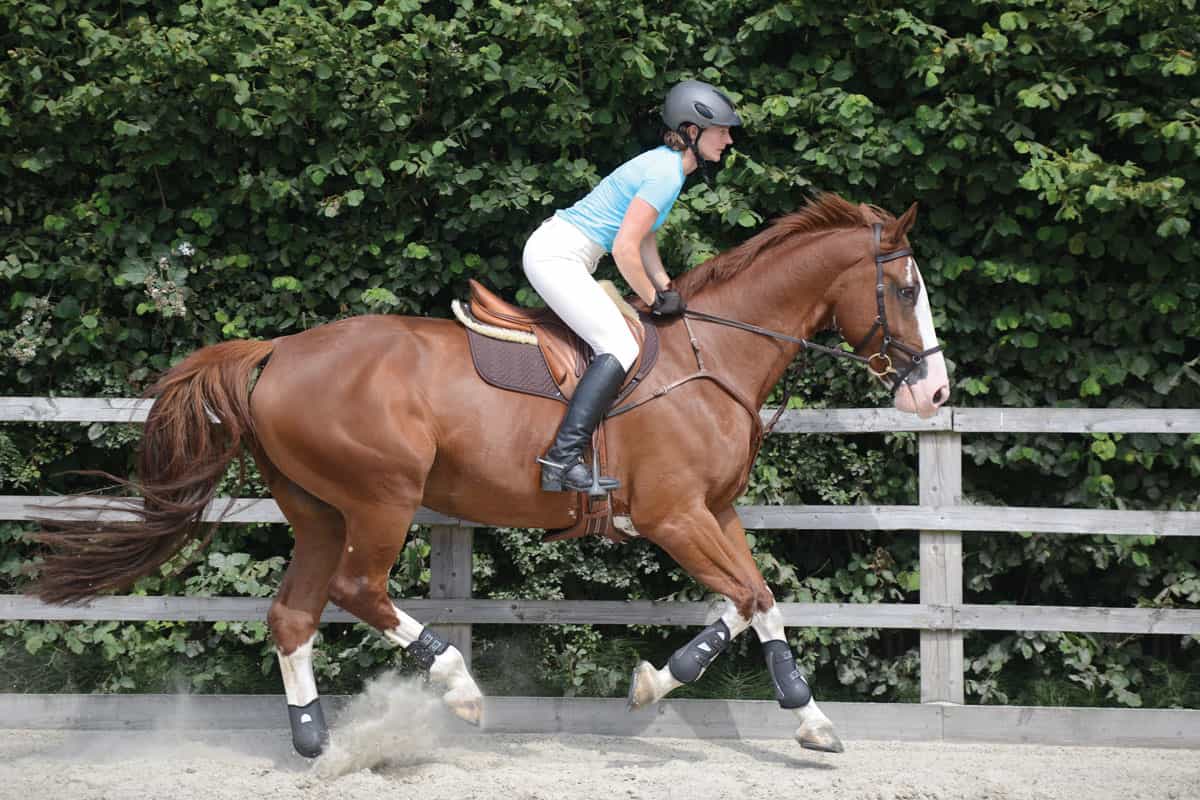
Your problem: You can’t seem to stay with your horse
Whether you anticipate a fence by throwing yourself up your horse’s neck or get caught out and left behind, finding yourself working against him, it results in an uncomfortable jump for you both.
The cause: Jumping ahead or getting left behind usually comes down to you trying to do too much. Your job is to create the right canter, choose the line to the fence and stay in balance – it’s your horse’s responsibility to leave the ground and clear the fence.
The solution: Learning to wait for a fence to come to you takes focus and dedication, and it’s an issue that’s easiest to tackle with your instructor, who can remind you on the approach to straighten your spine, keep your eyes up and let the fence come to you.
- if you tend to get left behind because your horse takes off earlier than expected, put a ribbon or brightly-coloured rubber band in his mane, about a third to halfway up his neck. On the approach to a fence stay tall in the saddle, but hold his mane where your marker is. Keep your eyes up and feel his stride beneath you – holding a handful of his mane will prevent you getting behind his motion and, by giving him the responsibility to leave the ground, you’ll learn to feel when he’s preparing for lift-off.
- if you’re guilty of throwing your body up your horse’s neck, practise jumping small fences – cross-poles are perfect – without stirrups. Fit a neckstrap that you can hold on to if you need to and let your horse quietly pop over them. Small fences require barely any upper body motion, and without your stirrups to propel you, you’ll only be able to move as much as your horse’s jump allows. If your own horse isn’t suitable, ask your instructor if you can book a lesson on a quiet school horse.
Your problem: You catch your horse in the mouth
An inadvertent pull in the mouth punishes your horse for jumping and can quickly put him off the idea of leaving the ground.
The cause: If you have inflexible hands over a fence, you may be compensating for a lack of security elsewhere in your position. You may also ride with a restrictive hand because your horse is quick or strong.
The solution: Go back to basics and correct your leg and body position so you have the stability to give your horse freedom over a fence. If the rest of your position isn’t to blame, you need to become comfortable with allowing your hands to move up and down your horse’s neck independently of your body. This can be practised on the flat or, even better, over poles in all three gaits. Simply walk, trot and canter over the poles, letting your hands follow the contact as your horse stretches his neck over them.
You can also practise by holding your reins upside down over small fences. This is how you’d hold the reins if you were driving a horse, with your hand positioned like it’s holding a saucepan. Holding your reins like this means you can’t brace against them and it stops you from locking your elbows against the movement. Practise on the flat to get comfortable with this way of riding, then pop over some single fences before tackling a simple grid.
Your problem: You look down at fences
Have you ever been told by your instructor that if you look at the bottom of a fence, it’s where you’ll end up? If you’re mounted on a forgiving horse, you may be able to get away with pole-gazing, but the knock-on effect it has on your position – and your ability to find your way around a course – means it’s a habit you should seek to fix, pronto.
The cause: Riders who stare at fences often do it because they’re not sure when their horse will take off and have convinced themselves that they’ll see a stride if they quite literally look for it. The opposite is usually true – your head weighs a considerable amount, and looking down shifts your balance and loads your horse’s shoulders in the last couple of strides, making it more likely that he’ll have to adjust to organise his take-off point. On a less honest, less experienced, or less confident horse, this can result in a refusal.
The solution: Ask a friend or your instructor to help you out with this one. Working over a single fence, ask your helper to stand on the landing side – at a safe distance – and hold up their hand. As you ride to the fence, they should change the number of fingers they’re holding up, so you have to look at their hand and call out the number, instead of looking at
the fence.
You can also try this easy exercise to encourage you to look up when you’re jumping…
- Set up two small upright fences on opposite sides of a 20m circle and canter over them.
- Approach the first fence and keep it in sight until you’ve established your line. Then, in the last two or three strides, look across to your other fence.
- Ride the next fence in the same way, shifting your eyes in the last few strides and trusting your horse to jump beneath you.
- Have a go on the other rein.
TOP TIP
Gymnastic grids are a great way to solidify your position and encourage you to stay central, allowing your horse to jump underneath you. Incorporate lines of bounces and one-stride distances, and focus on remaining straight and supple.




